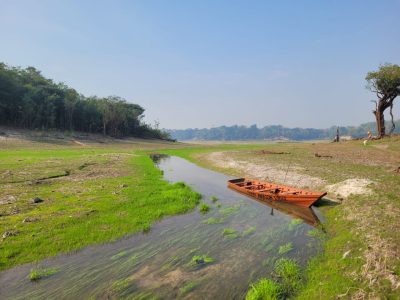Festa Junina, São João, and Festa do Milho are some of the names given to one of Brazil’s most traditional and beloved celebrations. This “festivity” is celebrated throughout the entire month of June (sometimes extending into July) in literally all regions of the country, with much joy and enthusiasm.
Like much of Brazilian popular culture, Festa Junina is a melting pot of influences due to the country’s diverse heritage. But don’t worry, we’ll explain what it’s all about.
Festa Junina has its roots in pagan celebrations held in Europe during the summer solstice in June, in the Northern Hemisphere. With the advent of Christianity in Europe, these festivities were incorporated into the Catholic calendar to honor popular saints like Saint Anthony, Saint John, and Saint Peter, whose celebrations occur on June 13, 24, and 29, respectively.
According to National Geographic, the Portuguese brought this tradition to Brazil during the colonial period in the 16th century. At that time, the celebrations of the three saints were marked by processions, masses, dances, and popular celebrations. Over time, Festa Junina was also influenced by Indigenous and Afro-Brazilian traditions, adding cultural elements.
The Indigenous people contributed practices such as the use of bonfires and rituals related to agriculture and fertility. African influences introduced dances, music, and typical instruments like the drum and zabumba. Amazing, isn’t it?
What Changes from Region to Region
Colorful flags, balloons, bonfires, and traditional foods are symbols of this grand festival. Despite these common elements, each region brings its own peculiarities and different patterns. Let’s explore the differences in Festa Junina across Brazil’s main regions: North, Northeast, Southeast, South, and Central-West.
In the North region, Festa Junina takes on a special color with the integration of Indigenous and riverside traditions. In states like Pará and Amazonas, the festival blends with other cultural celebrations, such as Boi-Bumbá. In Amazonas, there is the Parintins Folklore Festival, featuring two rival Boi-Bumbás: Boi Garantido and Boi Caprichoso. Because of this rivalry, the festival is marked by intense competition, mobilizing passionate red and blue fans, representing the colors of the Boi-Bumbás. The festival, held since 1965, is recognized as Cultural Heritage of Brazil by the National Institute of Historic and Artistic Heritage (IPHAN).
Music in this region is diverse, including carimbó and brega. Traditional foods have Amazonian influences, with dishes like tacacá and maniçoba, alongside the usual corn-based delicacies. The festivities take place in both urban and rural areas, with a strong sense of community and celebration of nature.
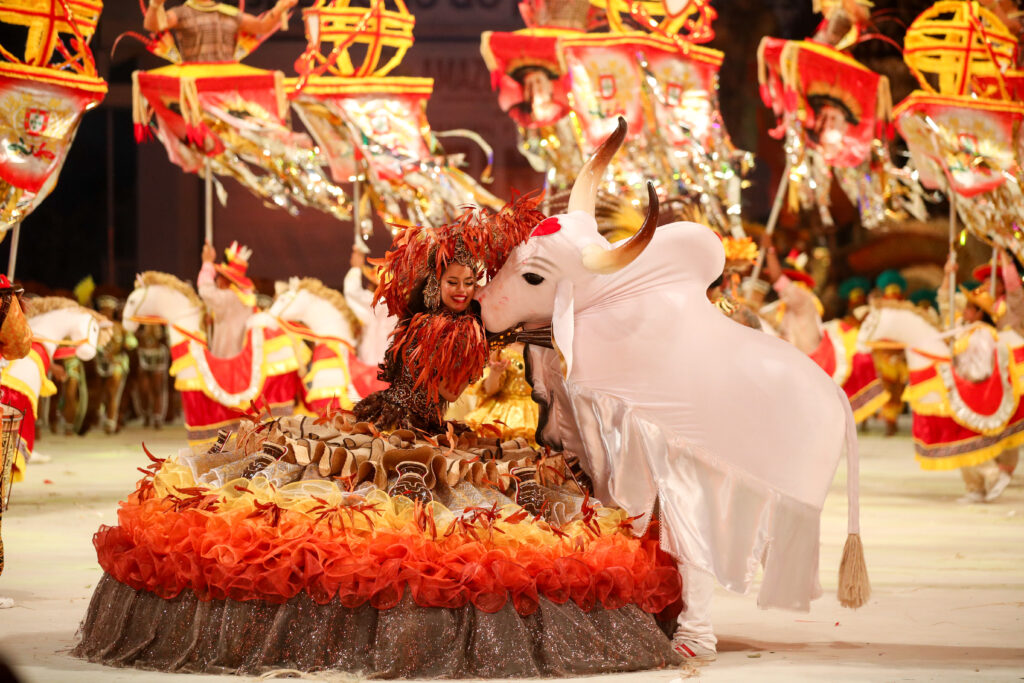
The Northeast region is undoubtedly the heart of Festa Junina in Brazil. Regionally called “São João,” the celebration is grand, especially in cities like Caruaru in Pernambuco and Campina Grande in Paraíba. The celebration is marked by strong cultural and religious traditions, such as processions honoring Saint John (whose day is a holiday in the states of Pernambuco, Paraíba, and Alagoas), Saint Anthony, and Saint Peter.
Music is dominated by forró, xote, and baião, with local artists playing songs by great names of the genre like Luiz Gonzaga, Dominguinhos, and Santanna. Traditional foods include pamonha, canjica, mungunzá, boiled corn, corn cake, tapioca, peanuts, and more. Quadrilhas, a type of folk dance performed during Festa Junina, are a major highlight, and their competitions turn into a colorful spectacle broadcasted throughout the region.
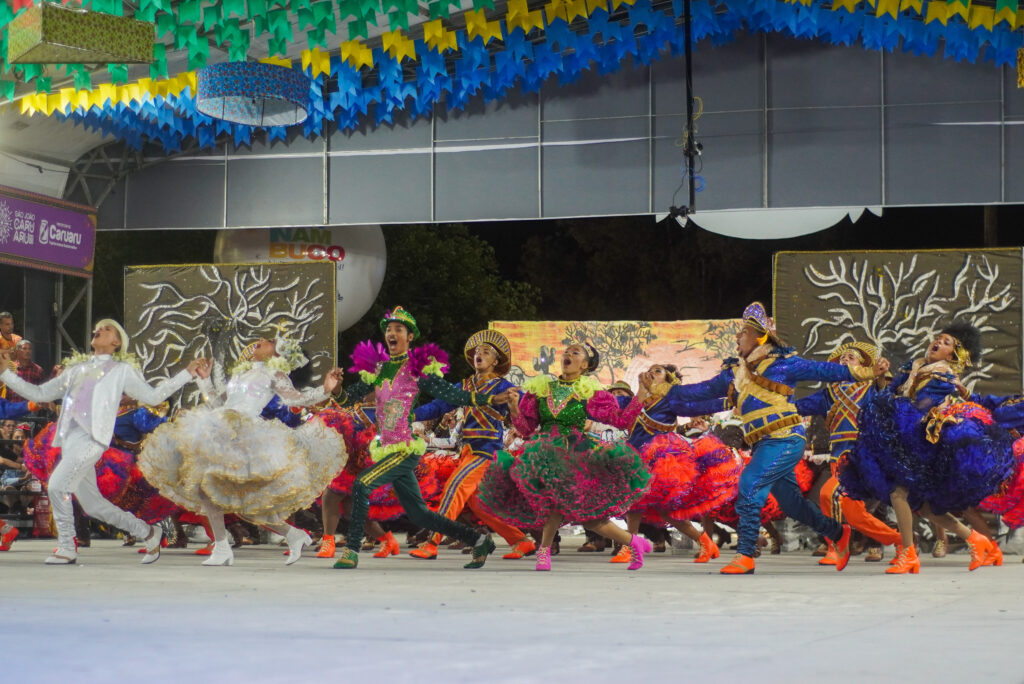
In the Southeast, Festa Junina is also celebrated with great enthusiasm but with some notable differences. In states like São Paulo and Minas Gerais, the festivals can be held in clubs, schools, and churches, and are more urbanized. Given the colder temperatures during this period, hot alcoholic beverages mixed with fruits and spices are added to the menu, such as vinho quente and quentão, the latter made with cachaça.
In addition to forró, the music can include sertanejo and música caipira. The typical cuisine is similar to that of the Northeast, but with the addition of regional dishes like cornmeal cake and curau. Quadrilhas in the Southeast tend to be more choreographed and rehearsed, reflecting a more theatrical touch.
In the South of Brazil, which includes the states of Santa Catarina, Paraná, and Rio Grande do Sul, European traditions, especially from German and Italian immigrants, influence the celebrations. Chimarrão, a typical drink from the region, may appear at the festivities, and barbecue is also a frequent addition to the Junina menu.
Traditional gaúcha music can blend with forró, creating an interesting cultural fusion. Typical dances also include fandango.
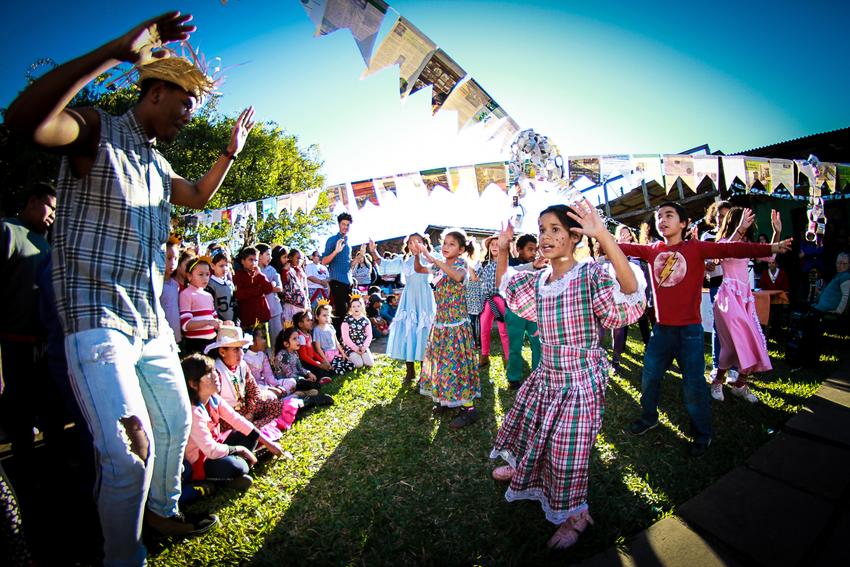
In the South of Brazil, which includes the states of Santa Catarina, Paraná, and Rio Grande do Sul, European traditions, especially from German and Italian immigrants, influence the celebrations. Chimarrão, a typical drink from the region, may appear at the festivities, and barbecue is also a frequent addition to the Junina menu.
Traditional gaúcha music can blend with forró, creating an interesting cultural fusion. Typical dances also include fandango.
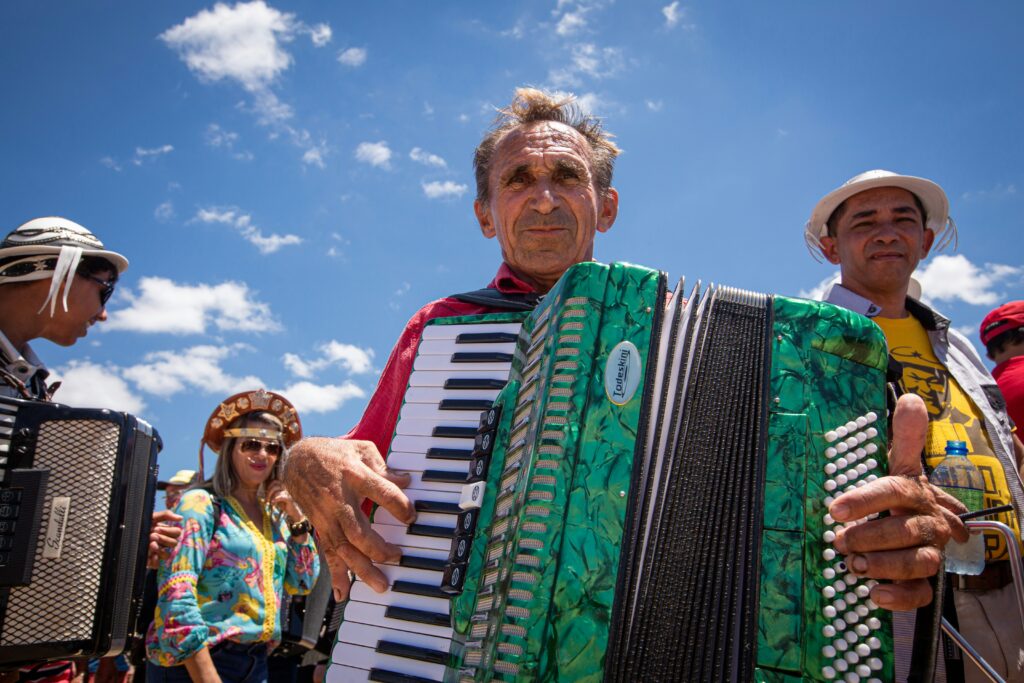
Festa Junina is a celebration that unites Brazil from North to South and, at the same time, reflects the country’s rich cultural diversity!
The decorations are colorful and joyful, with flags, paper balloons, and ornaments made of straw and fabric. Game and food stalls are adorned with these decorative elements, creating a festive and welcoming atmosphere. Additionally, typical costumes, such as chita dresses for women and plaid shirts for men, are worn in all regions.
It’s a vibrant display of culture, joy, and diversity of the Brazilian people. We highly recommend that foreign visitors experience this immersion. If your clients are interested, contact us to create a personalized itinerary for this authentic Brazilian celebration.




